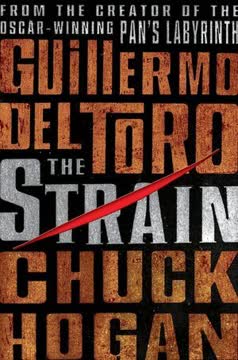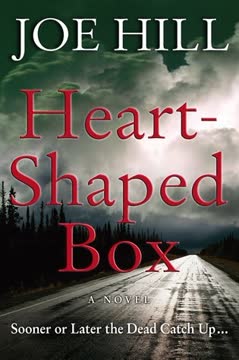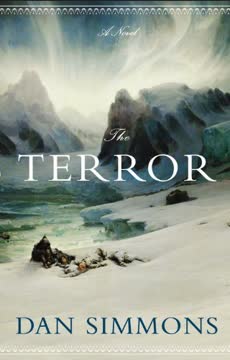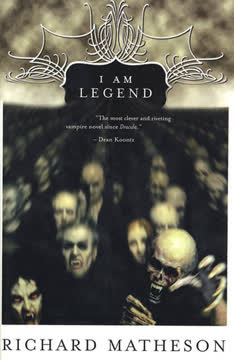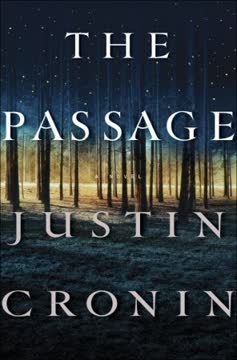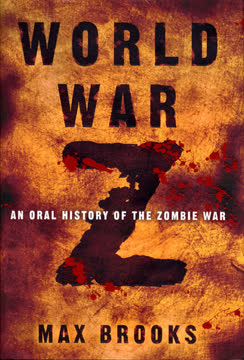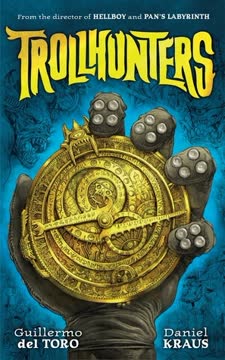Plot Summary
The Legend of Jusef Sardu
In a quaint village, young Abraham Setrakian hears a chilling tale from his grandmother about Jusef Sardu, a nobleman afflicted with gigantism. Sardu, known for his kindness, embarks on a hunting trip to Romania, only to return alone after a mysterious beast kills his family. Upon his return, children begin to vanish, and Sardu's legend becomes a cautionary tale, warning children to eat and grow strong, lest Sardu come for them. This story sets the stage for the dark events to unfold, hinting at an ancient evil lurking in the shadows.
The Mysterious Flight 753
Flight 753 from Berlin lands at JFK Airport, shrouded in an eerie silence. Communication with the plane ceases, baffling air traffic controllers and ground crew. Lorenza Ruiz, a baggage handler, senses something ominous as she approaches the aircraft. Investigators, including Dr. Ephraim Goodweather from the CDC, discover all passengers and crew dead, with no signs of struggle or trauma. This mysterious event draws Eph and his team into a deeper investigation, setting off a chain of events that will challenge their understanding of life and death.
The Survivors' Strange Symptoms
Among the dead, four passengers are found alive but unconscious, taken to a hospital for observation. Dr. Goodweather and his team are puzzled by their symptoms: severe headaches, muscle pain, and disorientation. As they investigate, they find a strange biological substance in the plane's cabin. The survivors begin to exhibit unusual behavior, hinting at a deeper, more sinister transformation. This discovery propels the team into a race against time to understand the nature of the threat they face.
The Old Man's Warning
Abraham Setrakian, now an old man, watches the news of Flight 753 with dread. He knows the legend of Jusef Sardu is not just a story. Setrakian tries to warn Dr. Goodweather about the impending danger, urging him to destroy the bodies and the mysterious coffin found on the plane. His warnings are dismissed as the ramblings of a madman, but Setrakian knows the truth: a dark force has been unleashed. His knowledge becomes a crucial link to understanding the unfolding horror.
The Eclipse and Its Shadows
As a total solar eclipse casts a shadow over New York City, the atmosphere is charged with unease. People gather to witness the rare event, unaware of the darkness spreading beneath the surface. The eclipse seems to herald the awakening of something ancient and evil, as the survivors of Flight 753 begin to change, and the dead start to rise. This celestial event marks a turning point, signaling the beginning of a new era of terror.
The Awakening of the Dead
In the morgue, the bodies of Flight 753's victims begin to stir. Dr. Goodweather and his team are horrified to discover that the dead are not decomposing as expected. Instead, they are transforming into something monstrous. The survivors, too, are changing, driven by an insatiable thirst. The old man's warnings come to fruition as the city faces a new, terrifying threat. The dead's awakening marks the start of a plague that threatens to consume everything in its path.
The Plague Begins to Spread
As night falls, the transformed survivors and the reanimated dead spread throughout New York City, attacking the living. The infection spreads rapidly, threatening to overwhelm the city's resources. Dr. Goodweather and his team race against time to understand the nature of the plague and find a way to stop it. Meanwhile, Setrakian prepares for the battle he has been waiting for his entire life, knowing that the fate of humanity hangs in the balance. The city teeters on the edge of destruction as the plague's reach extends.
The Vampire Hunters' Final Stand
Eph, Setrakian, and Fet infiltrate the Master's lair beneath the World Trade Center site, determined to end the vampire plague. Armed with silver weapons and ultraviolet light, they face a horde of vampires, newly turned and ravenous. The hunters deploy a UVC mine, incinerating the vampires in a blinding flash. Yet, the Master escapes, proving more powerful and elusive than they imagined. The hunters realize they must adapt their strategy, as the Master's cunning and strength surpass their expectations.
The Master's Elusive Escape
Despite their best efforts, the hunters fail to destroy the Master. The ancient vampire, wounded but not defeated, flees into the labyrinthine tunnels beneath New York City. The hunters are left to ponder the Master's next move, knowing he will continue to spread his dark influence. The encounter leaves them shaken, but more determined than ever to stop the vampire menace before it consumes the city.
The City Descends into Chaos
As the vampire plague spreads, New York City spirals into chaos. Riots erupt, and the streets become battlegrounds between the living and the undead. The authorities struggle to maintain order, but the vampires' numbers grow with each passing night. Eph and his allies realize that the city's survival depends on their ability to rally the remaining uninfected and mount a coordinated defense against the vampire threat.
A Family Torn Apart
Eph's personal battle intensifies when he discovers that his ex-wife, Kelly, has been turned into a vampire. She returns home, driven by an insatiable hunger for their son, Zack. Eph is forced to confront the horror of his family's transformation, knowing that Kelly's love for Zack has been twisted into a deadly obsession. The encounter underscores the personal stakes of the vampire war, as Eph vows to protect his son at all costs.
The Battle for Humanity Begins
With the Master still at large and the city in turmoil, Eph and his allies prepare for the next phase of their fight. They know that the battle for humanity's survival will be long and arduous, requiring courage, sacrifice, and unity. As they regroup and strategize, they reach out to potential allies, hoping to build a coalition strong enough to challenge the Master's growing army. The fate of the world hangs in the balance as the hunters brace for the ultimate confrontation.
Characters
Abraham Setrakian
Setrakian is a Holocaust survivor who knows the truth about the legend of Jusef Sardu. His life has been dedicated to preparing for the return of the dark force he encountered in his youth. Setrakian is determined to stop the spread of the plague, even if it means sacrificing everything. His knowledge and experience make him a crucial figure in the fight against the vampires.
Dr. Ephraim Goodweather
Eph is a dedicated epidemiologist thrust into a battle against an ancient evil. His personal stakes are high, as he struggles to protect his son, Zack, from the vampire plague that has claimed his ex-wife, Kelly. Eph's journey is one of transformation, as he evolves from a man of science into a warrior against the undead. His leadership and determination are vital to the survival of humanity.
Nora Martinez
Nora is Eph's second-in-command and confidante. Her scientific expertise and emotional resilience make her an invaluable asset in the fight against the spreading plague. She shares a complicated personal history with Eph, adding depth to their professional relationship. Nora's strength and intelligence are key to unraveling the mystery of the infection.
Vasiliy Fet
Fet is a New York City exterminator who joins the fight against the vampires. His expertise in pest control proves crucial in navigating the city's underground tunnels and combating the vampire infestation. Fet's resourcefulness and bravery make him a vital member of the team, bringing a unique perspective to the battle.
Kelly Goodweather
Once Eph's wife, Kelly is transformed into a vampire, driven by a twisted love for her son, Zack. Her transformation highlights the personal cost of the vampire plague, as her maternal instincts are corrupted into a deadly obsession. Kelly's change serves as a poignant reminder of the human toll of the vampire menace.
The Master
The Master is the progenitor of the vampire plague, a being of immense strength and cunning. His presence looms over the city, orchestrating the spread of the infection. The Master's ultimate goal is to dominate humanity, and his escape from the hunters' trap signals a long and difficult battle ahead. His elusiveness and power make him a formidable foe.
Jim Kent
Jim is a member of Eph's team, responsible for managing logistics and communications. His exposure to the infected survivors puts him at risk, and his loyalty is tested as he becomes entangled in the unfolding crisis. Jim's role highlights the challenges faced by those on the front lines of the epidemic.
Gabriel Bolivar
Bolivar is one of the four survivors of Flight 753. Known for his gothic persona, he becomes a symbol of the plague's insidious nature as he undergoes a horrifying metamorphosis, driven by a primal hunger. Bolivar's transformation underscores the unpredictable and terrifying nature of the infection.
Ansel Barbour
Ansel is another survivor of the flight, struggling with the changes overtaking his body and mind. His transformation into a creature of the night threatens his family and forces him to confront the darkness within. Ansel's story illustrates the personal tragedies wrought by the vampire plague.
Eldritch Palmer
Palmer is a powerful businessman with ties to the dark force behind the plague. His motivations are shrouded in mystery, but his influence is felt throughout the unfolding crisis. Palmer's involvement adds a layer of intrigue and complexity to the narrative.
Augustin "Gus" Elizalde
Gus is a young man caught up in the chaos of the spreading infection. His encounter with the infected changes his life, forcing him to choose between self-preservation and doing what is right. Gus's journey reflects the moral dilemmas faced by those caught in the crossfire of the vampire war.
Plot Devices
The Eclipse
The total solar eclipse serves as a symbolic and literal turning point in the story. It marks the awakening of the ancient evil and the beginning of the plague's spread, casting a shadow over the city and its inhabitants. The eclipse's timing and symbolism underscore the story's themes of light versus darkness.
The Coffin
The black wooden cabinet found in the cargo hold of Flight 753 is a key plot device. Its disappearance and the soil within hint at the presence of an ancient force, setting the stage for the unfolding horror. The coffin's significance is tied to the Master and his plans for domination.
The Infection
The infection spreading from the survivors and the dead is a central plot device, driving the narrative forward. Its mysterious nature and rapid transmission create tension and urgency as the characters race to understand and contain it. The infection's impact on individuals and society is a core element of the story.
The Old Man's Knowledge
Setrakian's knowledge of the legend of Jusef Sardu and his warnings about the plague provide crucial context for the unfolding events. His insights guide the protagonists as they confront the ancient evil threatening their world. Setrakian's past experiences are instrumental in shaping the fight against the vampires.
The UVC Mine
The UVC mine is a powerful tool used by the hunters to incinerate vampires with ultraviolet light. Its deployment in the Master's lair demonstrates the hunters' ingenuity and desperation, as they seek to turn the tide in their favor. The mine's effectiveness underscores the importance of technology and innovation in the fight against the supernatural.
Analysis
"The Strain" by Guillermo del Toro is a gripping narrative that blends horror, science fiction, and mythology to explore themes of survival, transformation, and the battle between light and darkness. The story delves into the human condition, examining how individuals and societies respond to existential threats. Through its richly developed characters and intricate plot, the book highlights the resilience of the human spirit and the importance of unity in the face of overwhelming odds. The novel serves as a cautionary tale about the dangers of unchecked ambition and the consequences of ignoring the past. Ultimately, "The Strain" is a compelling exploration of the struggle for humanity's survival in a world teetering on the brink of chaos.
Last updated:
FAQ
Synopsis & Basic Details
What is The Strain about?
- Global Pandemic Threat: The Strain chronicles the sudden, mysterious landing of Flight 753 at JFK, where all passengers and crew are found dead. This inexplicable event draws CDC epidemiologist Dr. Ephraim Goodweather into an investigation that quickly uncovers a terrifying, ancient biological threat.
- Ancient Evil Unleashed: The story rapidly escalates from a medical mystery to a supernatural horror, as the deceased passengers reanimate and begin to spread a vampiric plague across New York City. This outbreak is orchestrated by an ancient, powerful entity known as the Master, who arrived hidden within a mysterious coffin on the plane.
- Desperate Fight for Survival: As the city descends into chaos, Eph, alongside the enigmatic Holocaust survivor Abraham Setrakian, and later joined by others, must confront the horrifying reality of the vampires. They race against time to understand the true nature of the infection and find a way to stop the Master before humanity is irrevocably lost.
Why should I read The Strain?
- Unique Genre Blend: The Strain offers a compelling fusion of medical thriller, supernatural horror, and urban fantasy, providing a fresh take on vampire lore rooted in biological and mythological explanations. It subverts traditional vampire tropes, presenting them as a parasitic infection rather than romanticized creatures.
- Intense Pacing & Suspense: The narrative maintains a relentless, escalating pace, building tension from the eerie silence of the initial plane landing to the city's rapid descent into chaos. Readers are drawn into a high-stakes race against time, filled with visceral action and psychological dread.
- Rich Character Development: The novel features a diverse cast of characters, from the flawed but determined scientist Ephraim Goodweather to the wise and vengeful Abraham Setrakian, each grappling with personal demons while fighting for humanity's survival. Their individual struggles and transformations add significant emotional depth to the apocalyptic narrative.
What is the background of The Strain?
- Post-9/11 NYC Setting: The story is deeply rooted in a contemporary New York City, leveraging its iconic landmarks (JFK, WTC site, Times Square, subway system) and the collective memory of urban disaster. The Port Authority's response and the lingering specter of 9/11 (e.g., the officer at Ground Zero, the WTC "bathtub" as a lair) ground the supernatural horror in a familiar, vulnerable reality.
- Ancient European Folklore: The narrative is heavily influenced by Eastern European vampire mythology, particularly through Abraham Setrakian's backstory as a Holocaust survivor and his lifelong pursuit of the Master. The legend of Jusef Sardu and Setrakian's experiences in Treblinka provide a historical and cultural depth to the origins of the "strain."
- Biological & Scientific Framework: The authors meticulously integrate scientific and medical concepts, portraying vampirism not as a curse but as a parasitic viral infection. Details like the CDC's Canary project, forensic pathology, and the specific biological changes in the infected (e.g., white blood, stingers, altered organs) lend a chilling realism to the supernatural elements.
What are the most memorable quotes in The Strain?
- "Pick-pick-pick.": This recurring sound, first heard in Abraham Setrakian's grandmother's tale of Jusef Sardu, then echoing in his memories of Treblinka, becomes a chilling motif for the Master's approach. It symbolizes the relentless, insidious nature of the ancient evil, a sound that heralds vanishing children and impending doom.
- "The dead have risen.": Uttered by Abraham Setrakian to Ephraim Goodweather, this blunt statement shatters Eph's scientific worldview and forces him to confront the impossible. It marks the definitive shift from a medical mystery to a full-blown supernatural apocalypse, encapsulating the horrifying truth of the unfolding plague.
- "My sword sings of silver!": Setrakian's battle cry, often repeated in the "old language," embodies his lifelong vendetta and the ancient methods required to combat the vampires. It highlights the unique vulnerability of the creatures to silver, transforming a common metal into a potent weapon against the supernatural.
What writing style, narrative choices, and literary techniques does Guillermo del Toro use?
- Visceral, Sensory Detail: The authors employ rich, often grotesque, sensory descriptions, particularly focusing on smells (ammonia, phosphorous, earthworms, putrid flesh) and tactile sensations (clammy skin, wriggling worms). This immersive style pulls the reader into the horrifying reality of the plague, making the supernatural feel disturbingly tangible.
- Alternating Perspectives & Pacing: The narrative frequently shifts between multiple character viewpoints (Eph, Setrakian, Nora, Fet, Gus, victims, even the Master and Palmer), offering a panoramic view of the unfolding crisis. This is coupled with a relentless, escalating pace, using short, impactful scenes and cliffhangers to maintain high tension and urgency.
- Subversion of Tropes & Scientific Realism: Del Toro and Hogan deconstruct classic vampire mythology, replacing romanticized notions with a biologically grounded, parasitic infection. They use scientific jargon and forensic detail (e.g., autopsy findings, viral replication) to lend credibility to the fantastical elements, creating a unique blend of horror and speculative fiction.
Hidden Details & Subtle Connections
What are some minor details that add significant meaning?
- Lorenza's "Dead Leviathan": The baggage handler Lorenza Ruiz's fleeting thought of Flight 753 as a "large, rotting corpse, a beached whale" upon first seeing it foreshadows the true, grotesque nature of its cargo and the biological decay it represents. This seemingly throwaway line hints at the plane's role as a vessel of death, not just a stalled aircraft.
- The Dogs' Behavior: Ansel Barbour's Saint Bernards, Pap and Gertie, exhibit unusual growling and fear around him as he begins to turn, and later, Ansel himself notes the "thrumming" coming from them. This subtle detail highlights animals' heightened sensitivity to the nascent vampiric infection, serving as an early, instinctual warning system that humans miss.
- Palmer's Cold Room & Dialysis: Eldritch Palmer's constant need for a precisely controlled, cold environment and his reliance on dialysis are not just eccentricities; they subtly mirror the vampires' aversion to heat and their own "replenishment" needs. This foreshadows his eventual alliance with the Master, as he seeks a "cure" for his frail mortality that aligns with the vampires' existence.
What are some subtle foreshadowing and callbacks?
- Setrakian's "Pick-Pick-Pick" Motif: The rhythmic sound of Jusef Sardu's cane, a childhood fear for Abraham, is subtly echoed throughout the book. It reappears in Setrakian's memory of the Master in Treblinka ("Pick-pick-pick..."), and later, in the "thrumming" sound heard by Ansel and Lorenza, linking the ancient evil directly to the modern outbreak and its victims.
- The Eclipse as an "Eclipse of the Earth": The narrative explicitly corrects the common misnomer of a "solar eclipse," calling it an "occultation" or "eclipse of the earth." This rephrasing subtly foreshadows the Master's true intent: not just to block the sun, but to cast a permanent shadow over humanity, effectively "eclipsing" the living world.
- The WTC Site's "Bathtub": Vasiliy Fet's observation of rats fleeing the World Trade Center excavation site, and his later realization that the Master's lair is there, subtly connects the new horror to a past national trauma. The "bathtub" becomes a symbolic wound in the city, a place of immense death and darkness that naturally attracts the Master, echoing Setrakian's "burning hole" experience.
What are some unexpected character connections?
- Jim Kent's Unwitting Betrayal: Jim Kent's seemingly innocuous role as Eph's logistical support hides a deeper, unwitting connection to Eldritch Palmer through the "Stoneheart Society." His phone calls to Palmer's company, initially dismissed as routine, later reveal him as a pawn in Palmer's scheme, highlighting how deeply the Master's influence has infiltrated human society.
- Ansel Barbour's Self-Imprisonment: Ansel's decision to chain himself in the dog shed, a place previously used to contain his beloved Saint Bernards, creates an unexpected parallel between his transformation and the animalistic nature of the vampires. His wife, Ann-Marie, later uses this self-imposed prison to contain him, mirroring the hunters' eventual strategy of trapping the creatures.
- Gus Elizalde's Streetwise Insight: Gus, initially a petty criminal, develops an unexpected connection to the unfolding horror through his encounter with the reanimated corpse in Times Square. His street-level pragmatism and understanding of "vermin" (rats) provide a unique, grounded perspective that surprisingly aligns with Setrakian's ancient knowledge, making him an unlikely but crucial ally.
Psychological, Emotional, & Relational Analysis
What are some unspoken motivations of the characters?
- Eph's Redemption Arc: Beyond his professional duty, Eph's relentless pursuit of the truth and his fight against the plague are deeply motivated by a desire for personal redemption. His failed marriage and strained relationship with Zack fuel his drive, as he desperately seeks to prove his worth as a father and protect his son from a world he feels he's already failed to safeguard.
- Palmer's Quest for Immortality: Eldritch Palmer's primary, unspoken motivation is his desperate desire to escape his frail, dying body and achieve immortality. His vast wealth and influence are merely tools to secure this ultimate "cure," leading him to align with the Master, a being of pure death, in a chilling Faustian bargain.
- Ann-Marie Barbour's Protective Rage: Ann-Marie's initial fear and obsessive-compulsive routines are rooted in a deep-seated trauma from her parents' death. Her unspoken motivation is to protect her children at all costs, which ultimately transforms her timidity into a fierce, desperate rage, enabling her to trap and sacrifice her turned husband for their safety.
What psychological complexities do the characters exhibit?
- Setrakian's Enduring Trauma: Abraham Setrakian exhibits profound psychological complexity stemming from his Holocaust experience. His "burning hole" nightmares and the "pick-pick-pick" motif reveal a man haunted by past atrocities, which fuels his singular, decades-long vendetta against the Master. His calm demeanor in the face of horror is a coping mechanism forged in unimaginable suffering.
- Eph's Moral Erosion: Dr. Ephraim Goodweather grapples with a rapid psychological transformation from a healer to a slayer. His initial scientific skepticism gives way to a brutal pragmatism, forcing him to commit acts of violence (killing Redfern, Matt, and the turned victims) that deeply conflict with his medical oath, highlighting the psychological toll of fighting an existential threat.
- Ansel Barbour's Self-Sacrifice: Ansel's internal struggle is a poignant exploration of self-awareness in the face of monstrous transformation. His initial thirst and pain lead to the horrifying act of killing his dogs, but his subsequent self-imprisonment and desperate attempts to protect his family reveal a profound, tragic self-awareness and a final act of love, even as his humanity slips away.
What are the major emotional turning points?
- Lorenza Ruiz's Primal Fear: The moment Lorenza Ruiz approaches Flight 753 and feels an unequivocal sense that "something in there was going to eat her" is a crucial emotional turning point. It's the first human, instinctual recognition of the supernatural horror, bypassing scientific explanation and setting a tone of primal dread for the reader.
- Eph's Discovery of Redfern's "Life": Eph's initial shock and subsequent realization that Captain Redfern is "alive" in the cockpit, followed by Redfern's "Mr. Leech" dream, marks a pivotal emotional shift for Eph. It shatters his purely scientific understanding of death and disease, opening the door to the terrifying, inexplicable reality of the vampires.
- Kelly Goodweather's Return: Kelly's appearance at her home, turned into a vampire and focused on Zack, is the ultimate emotional turning point for Eph. It transforms the global plague into an intensely personal battle, forcing him to confront the horror within his own family and solidifying his resolve to fight the Master, not just for humanity, but for his son.
How do relationship dynamics evolve?
- Eph and Kelly's Fractured Connection: The strained, post-divorce relationship between Eph and Kelly, initially marked by bitterness and custody battles, undergoes a tragic evolution. Their final, raw conversation reveals lingering affection and regret, only for Kelly's subsequent turning to twist their bond into a horrifying predator-prey dynamic, irrevocably tearing their family apart.
- Setrakian and Eph's Unlikely Alliance: The relationship between Abraham Setrakian and Ephraim Goodweather evolves from initial dismissal and skepticism (Eph viewing Setrakian as a "crazy old man") to a grudging respect and, eventually, a deep, interdependent partnership. Setrakian's ancient knowledge complements Eph's scientific pragmatism, forming the core of the human resistance.
- Gus and Felix's Tragic Friendship: Gus's loyalty to his friend Felix is tested and ultimately shattered by Felix's transformation. Gus's initial attempts to protect Felix give way to the horrifying necessity of destroying him, highlighting the brutal choices forced upon individuals by the plague and the tragic loss of human connection.
Interpretation & Debate
Which parts of the story remain ambiguous or open-ended?
- The Master's True Origins: While Setrakian provides a history of the Master and the Ancients, the ultimate origin of the "strain" and the vampires remains somewhat ambiguous. Setrakian states he "cannot prove" the Master's responsibility for the schism among the Ancients, leaving room for debate about the deepest roots of this ancient evil.
- The Nature of the Master's "Will": The Master's telepathic communication and hive-mind control over the turned vampires are clearly established, but the exact mechanism and limits of this influence are left open. It's unclear how much individual will, if any, remains in the newly turned, or how the Master's consciousness truly operates across such a vast network.
- The Fate of the Other Survivors: While Captain Redfern, Gabriel Bolivar, and Ansel Barbour are shown to have turned, the ultimate fate of Joan Luss and her children is left somewhat ambiguous. Her escape from the hospital and the subsequent "gas leak" in Bronxville imply her transformation and the spread of the infection, but her specific demise is not explicitly detailed, leaving it to reader inference.
What are some debatable, controversial scenes or moments in The Strain?
- The Killing of the "Dear Ones": The most controversial aspect is the necessity of killing newly turned family members and friends, referred to as "Dear Ones." Scenes like Eph killing Matt, Ann-Marie trapping Ansel, and Gus killing his mother and brother force characters and readers to confront the brutal reality that these are no longer human, but active vectors of a monstrous plague, challenging conventional morality.
- Setrakian's "Merciful" Beheadings: Setrakian's calm, almost ritualistic beheadings of the turned, often accompanied by his "singing sword" pronouncement, can be seen as controversial. While presented as a necessary evil for containment, his detached efficiency and the sheer number of victims raise questions about the dehumanization of the infected and the moral cost of fighting such a war.
- Eldritch Palmer's Alliance with Evil: Palmer's deliberate alliance with the Master, driven by his selfish desire for immortality, is a highly debatable point. His willingness to sacrifice humanity for personal gain, despite his immense wealth and power, presents a chilling commentary on human ambition and the corrupting influence of desperation, making him a truly despicable, yet complex, antagonist.
The Strain Ending Explained: How It Ends & What It Means
- The Master's Escape & Wounding: The first book concludes with Eph, Setrakian, and Fet confronting the Master in his Tribeca lair. Despite their combined efforts and the use of the UVC mine, the Master, though wounded by Eph's silver sword and temporarily blinded by the UVC light, manages to escape into the city's shadows. This signifies that the immediate threat is not neutralized, and the war is far from over.
- Kelly's Transformation & Zack's Peril: The most devastating personal blow comes when Eph discovers his ex-wife, Kelly, has been turned into a vampire. She returns to their home, drawn by the "Dear One" instinct to infect their son, Zack. This heartbreaking twist underscores the insidious nature of the plague, turning love into a weapon and forcing Eph to confront the horror within his own family.
- A Grassroots War Begins: The ending establishes that the official authorities
Synopsis & Basic Details
What is The Strain about?
- Global Pandemic Threat: The Strain chronicles the sudden, mysterious landing of Flight 753 at JFK, where all passengers and crew are found dead. This inexplicable event draws CDC epidemiologist Dr. Ephraim Goodweather into an investigation that quickly uncovers a terrifying, ancient biological threat.
- Ancient Evil Unleashed: The story rapidly escalates from a medical mystery to a supernatural horror, as the deceased passengers reanimate and begin to spread a vampiric plague across New York City. This outbreak is orchestrated by an ancient, powerful entity known as the Master, who arrived hidden within a mysterious coffin on the plane.
- Desperate Fight for Survival: As the city descends into chaos, Eph, alongside the enigmatic Holocaust survivor Abraham Setrakian, and later joined by others, must confront the horrifying reality of the vampires. They race against time to understand the true nature of the infection and find a way to stop the Master before humanity is irrevocably lost.
Why should I read The Strain?
- Unique Genre Blend: The Strain offers a compelling fusion of medical thriller, supernatural horror, and urban fantasy, providing a fresh take on vampire lore rooted in biological and mythological explanations. It subverts traditional vampire tropes, presenting them as a parasitic infection rather than romanticized creatures.
- Intense Pacing & Suspense: The narrative maintains a relentless, escalating pace, building tension from the eerie silence of the initial plane landing to the city's rapid descent into chaos. Readers are drawn into a high-stakes race against time, filled with visceral action and psychological dread.
- Rich Character Development: The novel features a diverse cast of characters, from the flawed but determined scientist Ephraim Goodweather to the wise and vengeful Abraham Setrakian, each grappling with personal demons while fighting for humanity's survival. Their individual struggles and transformations add significant emotional depth to the apocalyptic narrative.
What is the background of The Strain?
- Post-9/11 NYC Setting: The story is deeply rooted in a contemporary New York City, leveraging its iconic landmarks (JFK, WTC site, Times Square, subway system) and the collective memory of urban disaster. The Port Authority's response and the lingering specter of 9/11 (e.g., the officer at Ground Zero, the WTC "bathtub" as a lair) ground the supernatural horror in a familiar, vulnerable reality.
- Ancient European Folklore: The narrative is heavily influenced by Eastern European vampire mythology, particularly through Abraham Setrakian's backstory as a Holocaust survivor and his lifelong pursuit of the Master. The legend of Jusef Sardu and Setrakian's experiences in Treblinka provide a historical and cultural depth to the origins of the "strain."
- Biological & Scientific Framework: The authors meticulously integrate scientific and medical concepts, portraying vampirism not as a curse but as a parasitic viral infection. Details like the CDC's Canary project, forensic pathology, and the specific biological changes in the infected (e.g., white blood, stingers, altered organs) lend a chilling realism to the supernatural elements.
What are the most memorable quotes in The Strain?
- "Pick-pick-pick.": This recurring sound, first heard in Abraham Setrakian's grandmother's tale of Jusef Sardu, then echoing in his memories of Treblinka, becomes a chilling motif for the Master's approach. It symbolizes the relentless, insidious nature of the ancient evil, a sound that heralds vanishing children and impending doom.
- "The dead have risen.": Uttered by Abraham Setrakian to [Ephraim Goodwe
Review Summary
The Strain receives mixed reviews, with some praising its fresh take on vampires and intense, cinematic storytelling. Critics applaud the scientific approach to vampirism and the creepy atmosphere. However, others find fault with predictable plot elements, underdeveloped characters, and excessive gore. The book's pacing and writing style are divisive, with some readers finding it gripping and others struggling to stay engaged. Despite its flaws, many readers appreciate the novel's return to frightening, monstrous vampires and its blend of horror and thriller elements.
The Strain Series Series
Similar Books
Download PDF
Download EPUB
.epub digital book format is ideal for reading ebooks on phones, tablets, and e-readers.
